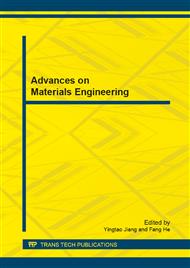p.38
p.45
p.50
p.55
p.60
p.69
p.74
p.80
p.86
Compressive Strength of Cement Mortar Using Sebha Clay, Treated by Sonication Method
Abstract:
Clay as natural pozzolan is found in the north of the city of Sebha, Libya. Sebha clay is relatively high in silica, and its physical and chemical properties could be referred to as ASTM C618 class N. Sonication treatment is carried out and the treated Sebha clay is used as a mineral admixture in the Portland cement mortar. Horn method 20 kHz frequencies with different powers and different times are used in the Sonication treated. The particle size distributions (PSD) and Scanning Electron Microscope (SEM) imaging are used to understand the mechanism of pozzolanic improvement of the Sebha clay after treatment by sonication. This paper shows the physical and chemical properties of sonication treat Sebha clay. The effect of magnitude of sonic power on pozzolanic activity of treated kaolin is investigated. The main aim of the present research is to study the strength characteristics of cement mortar using Sebha natural clay after sonication is treated as a partial replacement of ordinary Portland cement OPC. The parameters are investigated, including compressive strengths .The results show enhancement in particle size and pozzolanic activity of treated kaolin, with increase in sonic power and in the time.
Info:
Periodical:
Pages:
60-68
Citation:
Online since:
August 2013
Keywords:
Price:
Сopyright:
© 2013 Trans Tech Publications Ltd. All Rights Reserved
Share:
Citation:


